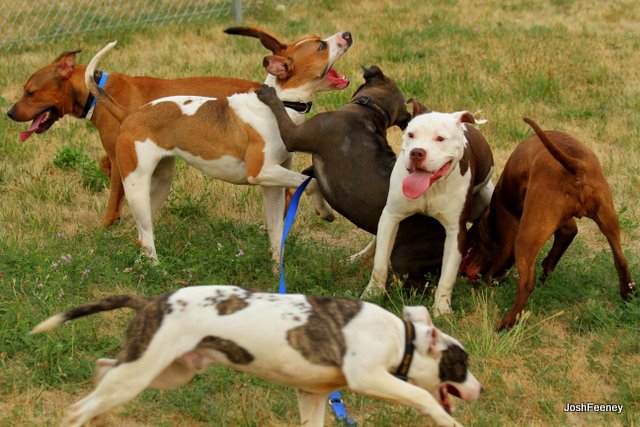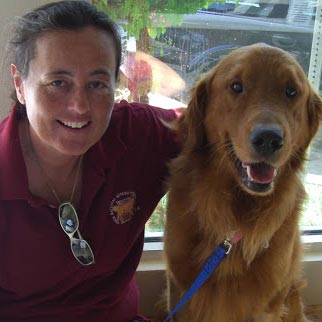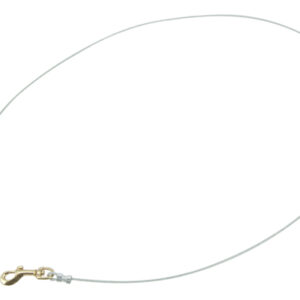No products in the cart.
Dog Daycare: Helping You Find One!
Dog Daycare: Helping You Find One!
- BADDogs Inc
Many of my clients ask about dog daycare as a solution to their dog’s social and exercise needs. As with so many questions about dog training, behavior and well-being, the answer generally is: it depends! There are many factors to consider when deciding if your dog would benefit from daycare, and then evaluating individual daycares to determine if they’re appropriate for you and your dog.
First, consider how “social” your dog really is. Watch your dog interact with other dogs. If he pursues those social opportunities and engages in play with enthusiasm (without being obnoxious or a bully!), then dog daycare may be a good alternative for him. If your dog is not so interested in being dog-social, or worse, seems to avoid social interactions with other dogs, then you’ve probably got a homebody who’d be better off with a visit from a pet sitter or dog walker during the day. Having watched and analyzed literally hundreds of videos of dog daycare playgroups, I’m amazed at the number of dogs I see hiding, cowering or clearly exhibiting stress and avoidance behaviors and no one really recognizes what’s really going on.
Now move on to the more challenging task: evaluating dog daycares as a safe and enjoyable environment for your dog. There’s a ton of good information out there on “best practices” for dog daycares, and I’ve listed some links to great articles on the subject at the end of this article. Here are a few things I would look for:
Appropriate staff to dog ratios
It is absolutely critical that there be enough human supervision to keep the playgroup under control and safe. There are various guidelines out there, but my standard is one human per 8-10 large dogs, and 1 human per 10-15 small dogs. It’s also imperative that staff has received proper training.
Appropriately organized play groups
Play groups should include dogs of similar size and age. Large dogs should never be grouped with small dogs. Puppies should never be mixed with adult dogs of any size; this has potential detrimental impacts on both the puppies and little dogs. I could argue that dog daycares are not an appropriate venue for puppies, but that’s a whole ‘nuther article. Senior dogs should not be grouped with younger dogs who are going to overwhelm them.
All dogs should be rested at least one time per day
This is a controversial topic among many people, but knowing what I know about dogs, I know that being continually exposed to the kind of stimulation dogs get in dog daycare can cause dogs to become over-aroused and, just as with small kids, when they get over-stimulated, bad things can happen. Dog daycare dogs should get some crated naptime during the day. This is good for the dog daycare operator and staff as well, as it helps to control and limit the size of the out-and-about population.
No high-impact exercise
Dog play should be natural and follow the course of the cooperative dogs in the play group. I’ve watched lots of videos of daycare staff exercising large groups of dogs by throwing tennis balls or Frisbees. Having dogs racing for balls and competing with other dogs to get them can result in fights and injuries, including sprained joints and soft tissue damage. Frisbee play is great for Frisbee dogs, whose people have worked with them to make sure they’re in great physical condition for that activity. For the average couch-potato family companion, Frisbee can result in sprains and ligament tears and ruptures. Everyone can have a great time without being encouraged to over-exercise and potentially injure themselves.
Lots of pet cams
Pet cams should be available in all play areas, and a bonus to have them in feeding and resting areas as well. You’ll never know about the treatment your pet is receiving unless you get to see that yourself. Pet cams should be easily accessible to the public as well, so prospective clients can see how the facility will manage their dogs’ care should they decide to use it. Make sure you see humans in the play areas at all times!
Get a tour
A well-run dog daycare shouldn’t have any problem with a full tour of the facility, including play areas, rest areas, feeding areas and at least a peek behind the scenes. Transparency is a sign of great customer service and good care of your dog!
Read your contract
The boarding contract you sign will define what is expected of you, but not always so much about what the dog daycare facility will deliver. Make sure you get all promises and assurances about your dog’s care in writing. Also be careful about what rights you sign away (such as arbitration clauses), and some facilities who use devices such as shock or citronella bark collars (which are completely unnecessary in a well-run daycare), so clauses about giving them the right to use these things on your dog will be in there.
Here are some additional sources for great information on finding and choosing a good daycare:
https://thebark.com/content/daycare-tips
https://www.thedoggurus.com/dog-deserve-excellence/
https://www.thedoggurus.com/exhaustion-not-measure-success/
Share This Post?
Facebook
Twitter
Pinterest

Recent Articles
About Author

Barbara Davis
I’ve been working with dogs and their people for more than 30 years! I’m certified in dog training by the Certification Council for Professional Dog Trainers, and certified as a Dog Behavior Consultant through the International Association of Animal Behavior Consultants (I’m also a founding member, currently Chair of Dog Division and serve on the faculty of their behavior consulting program, Animal Behavior Consulting: Principles and Practice). I’m also certified in training and behavior by the Association of Animal Behavior Professionals, and serve on their advisory board. I’m pleased to participate as an AKC CGC/S.T.A.R. Puppy program as an Evaluator.
Information
Featured Products
-
 Rattlesnake Avoidance Training Through Positive Reinforcement
$195.00 – $325.00Rated 0 out of 5
Rattlesnake Avoidance Training Through Positive Reinforcement
$195.00 – $325.00Rated 0 out of 5
Products
-
 Hazard Avoidance Training
$125.00 – $295.00Rated 0 out of 5
Hazard Avoidance Training
$125.00 – $295.00Rated 0 out of 5 -
 Rattlesnake Avoidance Training Through Positive Reinforcement
$195.00 – $325.00Rated 0 out of 5
Rattlesnake Avoidance Training Through Positive Reinforcement
$195.00 – $325.00Rated 0 out of 5 -
 Teenie Tethers
$10.95 – $12.95Rated 0 out of 5
Teenie Tethers
$10.95 – $12.95Rated 0 out of 5 -
 Trainer Packs by Pet Tethers
$50.00 – $75.00Rated 0 out of 5
Trainer Packs by Pet Tethers
$50.00 – $75.00Rated 0 out of 5
